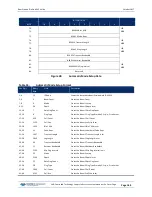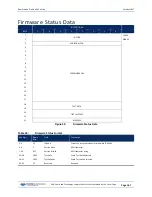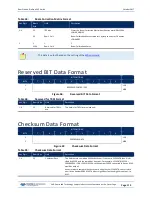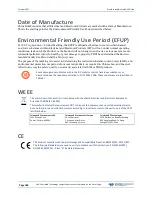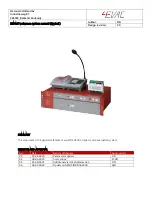
RiverPro and RioPro ADCP Guide
October 2017
EAR-Controlled Technology Subject to Restrictions Contained on the Cover Page.
Page 177
Recommended Data Decoding Sequence for Broad-
Band Data Format PD0
1. Locate the header data by locating the header ID number (in the case of
PD0
profile data that will
be 7F7F).
2. Confirm the correct header ID by:
a. Locate the checksum offset (located in the header data). This is the offset to the checksum
word in the current ensemble. The size of the ensemble is this offset plus 2 bytes (to account
for the checksum word), which is also the offset to the next ensemble.
b. Calculate the checksum of total number of bytes in the ensemble excluding the checksum. The
checksum is calculated by adding the value of each byte. The 2-byte least significant digits cal-
culated will be the checksum.
c. Read the 2-byte checksum word at the end of the ensemble, located by using the checksum
offset in the header (determined in step 2-a) and compare this checksum word to the value
calculated in step 2-b.
d. If the checksums match then this is a valid ensemble. If the checksums do not match then it is
not a valid ensemble and should go back to step 1 and search for the next header ID number
occurrence.
3. Locate the number of data types (located in the header data).
4. Locate the offset to each data type (located in the header data).
5. Locate the data ID type to decode by using the offset to each data type and confirm the data ID
number at that offset matches the ID type looking for.
6. Once the proper ID type has been located, use the Pioneer Technical Manual to understand what
each byte represents in that particular data type.



